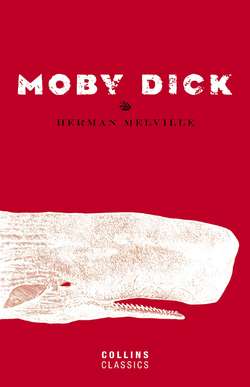Читать книгу Moby Dick - Герман Мелвилл, Герман Мелвилл - Страница 5
ОглавлениеLife & Times
Moby Dick
On the face of it, Moby Dick is simply a story about a whaleboat captain intent on killing a white whale that had previously maimed him and destroyed his ship. As a result, Herman Melville’s masterpiece was underestimated when first published in 1851.
In truth, Melville was exploring themes relating to belief systems and moral and ethical topics; the story itself was merely a vehicle by which Melville could address his philosophy. To that extent, Melville viewed the novel as a means of accessing the minds of people who might not ordinarily pick up a book about the kinds of issues he felt driven to discuss. Ironically, those same people entirely missed the allegory, and Moby Dick was perceived as nothing more than an adventure novel.
As a consequence, Moby Dick, although initially successful, was quickly forgotten, and Melville reached old age an unsung talent. Today the novel is hailed as one of the greats, after the book was resurrected in the wake of World War I. The story was seen as timely and illustrated what can happen when desire for vengeance is allowed to take control. By the close of World War II, the book had become symbolic of the struggle for power between nations.
Melville is now described as a romantic novelist, because Moby Dick evokes a bygone and masculine age, when men risked their lives on the oceans in the procurement of whale products. The eponymous whale, Moby Dick, is an albino male sperm whale. Sperm whales are toothed whales specialized to feed on giant squid, making them extremely dangerous to harpoon and kill. To a whaler, the male sperm whale was the ultimate adversary. Sailors used to carve designs and pictures into sperm whale teeth as trophies, which were sold as pieces of scrimshaw.
Sperm whales were particularly prized by whalers because their heads contain reservoirs of a substance called spermaceti oil, creating their bulbous foreheads. This oil was used by humans as fuel oil and many other substances used in cosmetics and pharmaceuticals. The oil had a high value until similar substances were derived from crude oil instead, thereby sounding the death knell for whaling.
For the whales themselves, the oil assists with their ability to dive to great depths in search of prey. It was this behavior that made the confrontation scenes in Moby Dick so thrilling, as the whale would dive for long periods, leaving the whalers in tense anticipation of what might happen next. Then the whale would suddenly erupt from beneath to wreak havoc on the wretched humans.
The whale, of course, was in its own environment, while the people were entirely reliant on technology to remain alive. At that time in history, the high seas were the most challenging places for people to live, so Moby Dick was the ultimate “man against the elements” tale.
While the main characters in Moby Dick are Christian Americans, the others comprise a world population in microcosm, encompassing many races and creeds. This has been interpreted as Melville juxtaposing Christian mores alongside those of a non-Christian mindset.
In the end, the narrating voice Ishmael is the sole survivor, clinging to flotsam after the whale has gone. It becomes apparent that the whale is representative of Melville’s idea of the Christian God. It has punished those who do not believe, and it has punished those who believe too much, for the obsessive Captain Ahab has perished with his crew.
Ishmael is representative of the moderate Christian—the meek who inherits the Earth, one might say. He came along for the ride and remained unharmed while hell raged around him, protected by his faith.
This premise is largely the reason the book became a classic in the American canon, because it is interpreted as a cautionary tale and a fable. The moral of the story is that those who keep their heads down will triumph in the end.
Herman Melville
Herman Melville found inspiration for Moby Dick by sailing on a whaler to the Pacific Ocean in 1841–1842. He then went AWOL from his ship and lived among the natives on the Marquesas Islands. After a number of weeks he boarded another whaler and traveled to Honolulu, Hawaii. He eventually returned to the U.S. mainland in 1844.
Melville was displeased at witnessing Christian missionaries in Hawaii forcing their faith on the natives, who had their own beliefs. Although he was a Christian himself, he saw that extreme righteousness was ethically questionable. This was the seed for Moby Dick, which questions the virtues of extreme beliefs.
Before Moby Dick, Melville had published a number of novels alluding to his seagoing adventures, but he never made a great deal of money from any of his work. During the writing of Moby Dick, he became a friend of Nathaniel Hawthorne, to whom he dedicated the book.
Melville spent the remainder of his working life as a customs officer for New York City. By the time he retired, few people remembered his past as an adventurer and novelist. He became an alcoholic, but his wife stuck by him and helped him recover. In sobriety he struggled with bouts of depression until his death at the age of seventy-two. It had been almost forty years since his writing career had ceased, but that hadn’t stopped him from continuing to write for his own pleasure.
In a way Melville’s own journey from adventurer, to novelist, to obscurity is part of the legend. Because he never tasted real success in his own lifetime, it is tempting to wonder what he might now think about the literary legacy he left behind. After all, Moby Dick is now regarded by some as the best American novel ever written.
